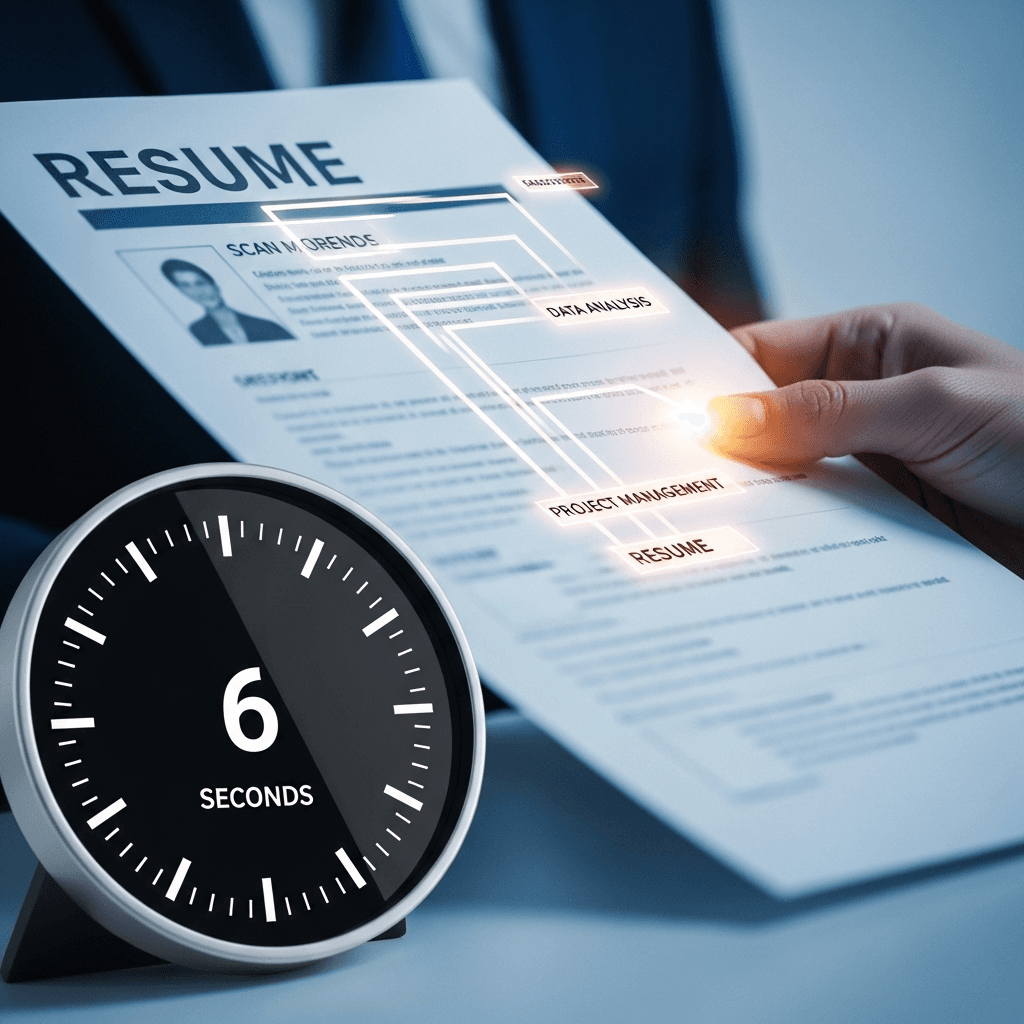The Final Interview: 5 Advanced Strategies to Go from Finalist to First Choice

You’ve made it to the last round. Now what? Learn the high-level tactics for preparing for senior-level interviews, presenting a 30-60-90 day plan, and sealing the deal.
Congratulations! Receiving an invitation to the final interview round is a significant achievement. You’ve successfully demonstrated that you have the skills, experience, and qualifications required for the role. However, this last stage is a different kind of challenge. The conversation shifts from "Can you do the job?" to "Are you the absolute best choice for our team and our future?"
At this level, every candidate is qualified. To stand out, you need to move beyond standard answers and showcase exceptional preparation, strategic thinking, and a genuine vision for the role. Therefore, we've outlined five advanced strategies to help you navigate this crucial step and transform from a promising finalist into their first choice.
1. It's Not Just About You Anymore: Researching Your Interviewers
By now, you've thoroughly researched the company. The next step is to research the people. The final round often involves meeting a cross-functional group of stakeholders, from your potential direct manager to a C-level executive. Understanding their individual roles and perspectives allows you to tailor the conversation and build rapport on a deeper level.
How to Conduct Your Research:
Leverage LinkedIn: This is your primary tool. Look up each interviewer and pay attention to their career path, tenure at the company, previous employers, and any articles or posts they've shared. Do you have shared connections or alma maters? What does their activity tell you about their professional priorities?
Prepare Specific Questions: Your research should inform your questions. Instead of asking a generic question to the whole panel, prepare targeted inquiries. This demonstrates meticulous preparation and respect for their time. For instance:
For the Department Head/Director: "I saw on your LinkedIn profile that you led the transition to Agile methodology two years ago. How has that influenced your strategic goals for the upcoming year, and how would my role contribute to those goals?"
For the Technical Lead: "I read the company's recent tech blog post on microservices. I'm curious about the specific challenges the team faced during that implementation and the current state of your tech stack."
For the HR/People Manager: "The company's values page emphasizes 'radical candor.' Could you share an example of how that value plays out in team performance reviews or feedback sessions?"
2. The "How Would You Approach This Role?" Question: Presenting a 30-60-90 Day Plan
This question, or a variation of it, is almost guaranteed to come up in a final interview. While other candidates will answer verbally, you can make a lasting impression by presenting a thoughtful, written 30-60-90 day plan. A simple, one-page document shows immense initiative, proves you're a strategic thinker, and gives the hiring team a tangible vision of you already succeeding in the role.
Structure your plan around a clear progression from learning to leading:
First 30 Days: Focus on Learning & Listening
Your goal is to absorb as much information as possible. This phase should highlight your commitment to getting up to speed efficiently.
Meet with key team members and stakeholders.
Understand internal processes, systems, and tools.
Review past projects and current performance metrics.
Identify early, quick wins that can be accomplished without disrupting existing workflows.
First 60 Days: Focus on Contributing & Collaborating
Now, you begin to transition from learning to doing. This phase is about starting to make a meaningful impact and integrating with the team.
Begin contributing to ongoing projects.
Identify opportunities for process improvement.
Collaborate with cross-functional teams to understand their needs and challenges.
Develop initial recommendations based on your first 30 days of observation.
First 90 Days: Focus on Owning & Leading Initiatives
By this point, you should be fully integrated and ready to take ownership. This phase demonstrates your long-term value.
Take the lead on a new project or initiative.
Implement one of the process improvements you identified.
Begin to set longer-term strategic goals for your area of responsibility.
Present a formal review of your progress and a forward-looking plan to your manager.
3. Demonstrating Culture Fit Without Faking It
Companies hire for longevity. They want someone who not only has the right skills but also aligns with their work environment and values. However, "culture fit" doesn't mean you have to pretend to be someone you're not. True alignment is about finding the authentic overlap between your personal values and the company's ethos.
Connect to Their Mission: Review the company's mission statement and values (usually on their "About Us" page). Think of specific examples from your past experience where you embodied those values. If they value "innovation," talk about a time you challenged the status quo. If they value "customer obsession," share a story about going above and beyond for a client.
Ask Insightful Questions: The best way to assess fit is to ask questions that reveal the reality of the company culture. This shows you're taking the decision as seriously as they are. Consider asking:
"How does the team handle disagreements or conflicting priorities?"
"What does success look like for this role in the first year, beyond the numbers?"
"Could you describe the communication style on the team? Is it more formal meetings, or informal Slack/Teams chats?"
4. The Art of the Follow-Up: Beyond the Standard Thank-You Note
A prompt, professional thank-you email is non-negotiable. But in the final round, a generic note is a wasted opportunity. Your follow-up is your last chance to make a case for your candidacy, so make it count.
Personalize, Personalize, Personalize: Send a separate, unique email to each person you met. A group email feels impersonal.
Reference Specifics: Jog their memory and show you were actively listening. Mention a specific project they discussed, a challenge they're facing, or a point of connection you made. For example: "I particularly enjoyed our discussion about expanding into the European market, and it got me thinking about..."
Reiterate Your Vision: Briefly and confidently restate why you are the right person for the job. Connect your skills to their specific needs and end with a final, powerful statement about the value you plan to bring.
5. Handling the "Do You Have Any Other Offers?" Question with Grace
This question can feel like a trap, but it's usually a practical inquiry. They might be trying to gauge your timeline, your market value, or how quickly they need to act. The key is to be honest without jeopardizing your position.
If you have another offer: Be transparent but diplomatic. You can say, "I have been fortunate to receive another offer, but this role at [Their Company Name] remains my top choice because of [specific reason, e.g., the team culture, the strategic challenge]." This creates a sense of urgency and reinforces your genuine interest. You can also state that you need to make a decision by a certain date, which can help expedite their process.
If you are in late stages with others: You can be honest about this, too. A good response is, "I am in the final stages with another company, but I am most excited about this opportunity for [reason]." This signals that you are a desirable candidate without the pressure of a formal offer.
If you have no other offers: Don't panic or lie. Simply express your enthusiasm for the role. Say, "I am actively exploring a few opportunities, but this position is the one I am most focused on and excited about. I'm confident it's the best fit for my skills and career goals."
Before You Get to the Final Round... You Have to Beat the System
Getting to the final interview means you’ve already won a major battle against Applicant Tracking Systems (ATS) and 6-second resume scans. But for many highly-qualified professionals, that first step is the hardest. If you're tired of screaming into the void of the "Apply Now" button, it's time for a new strategy.
Introducing Best CV "52": The Resistance Against the 6-Second Scan
At www.bestcv52.com, we see ourselves as a "declaration of war" on the flawed, algorithm-driven recruitment process. We were founded on the experience of crafting 52 unique CVs for 52 different roles, because we know that a one-size-fits-all resume doesn't work. Our mission is to fight fire with fire, using superior AI to beat the systems that unfairly filter out top talent.
Your Personalized Career Warfare Kit
We don't just "tweak" your CV; we arm you with a comprehensive, AI-powered arsenal for every single job application. Provide your CV and a job description, and we generate a complete application package:
A Perfectly Tailored CV & Cover Letter: Surgically rewritten to align with the job's requirements, the company's culture, and the known biases of their ATS.
Strategic Communication Templates: A full suite of emails (application, follow-up, thank-you) and targeted LinkedIn messages designed to get replies.
A Corporate Dossier & SWOT Analysis: We dissect the company and provide you with a personal SWOT analysis (Strengths, Weaknesses, Opportunities, Threats) for that specific role.
The Interview Arsenal: A customized prep guide with tailored interview questions and strategic talking points to make you an undeniable match.
Your career is worth more than 6 seconds. Stop playing their game. It's time to join the resistance and get the interview you deserve. Visit Best CV "52" to get started.
Quick Summary: Your Final Interview Q&A
Q: How should I prepare for a final interview?
A: Go beyond company research. Research each individual interviewer on LinkedIn to understand their background and role. Prepare specific, tailored questions for each person to show deep engagement.
Q: What is a 30-60-90 day plan and why should I make one?
A: It's a one-page document outlining your strategy for your first three months. It shows initiative and strategic thinking. The first 30 days should focus on learning, the next 30 on contributing, and the final 30 on owning and leading.
Q: How do I show "culture fit" without being fake?
A: Find genuine alignment. Connect your past experiences to the company's stated values. Ask insightful questions about team dynamics, communication, and success metrics to show you're serious about finding a good long-term fit.
Q: What makes a good follow-up email after a final interview?
A: Send a personalized email to each interviewer. Reference specific points from your conversation to show you were listening, and briefly reiterate your vision for the role and the value you'll bring.
Q: How do I answer if they ask about other job offers?
A: Be honest but strategic. If you have one, mention it politely while reinforcing that their role is your top choice. If you don't, simply express your strong enthusiasm for their specific opportunity.


